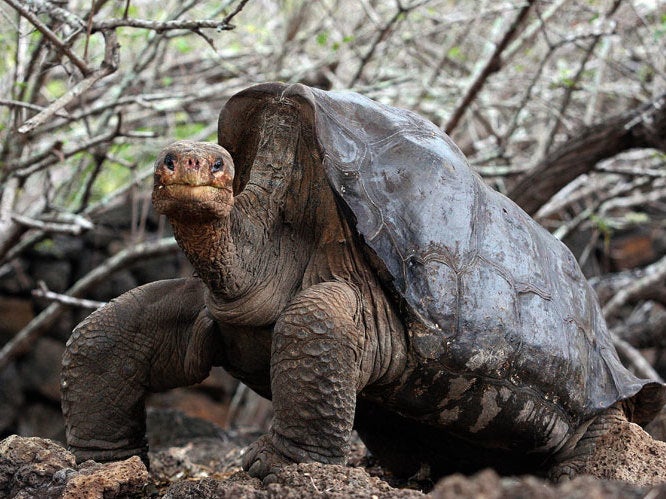Your support helps us to tell the story
From reproductive rights to climate change to Big Tech, The Independent is on the ground when the story is developing. Whether it's investigating the financials of Elon Musk's pro-Trump PAC or producing our latest documentary, 'The A Word', which shines a light on the American women fighting for reproductive rights, we know how important it is to parse out the facts from the messaging.
At such a critical moment in US history, we need reporters on the ground. Your donation allows us to keep sending journalists to speak to both sides of the story.
The Independent is trusted by Americans across the entire political spectrum. And unlike many other quality news outlets, we choose not to lock Americans out of our reporting and analysis with paywalls. We believe quality journalism should be available to everyone, paid for by those who can afford it.
Your support makes all the difference.The giant tortoise Lonesome George, whose failed efforts to produce offspring made him a symbol of disappearing species, has been found dead, officials at the Galapagos National Park announced.
Lonesome George was believed to be the last living member of the Pinta island subspecies and had become an ambassador of sorts for the islands off Ecuador's coast whose unique flora and fauna helped inspire Charles Darwin's ideas on evolution.
The tortoise's age was not known but scientists believed he was about 100, not especially old for giant tortoises, who can live well over a century. Scientists had expected him to live another few decades at least.
Various mates had been provided for Lonesome George after he was found in 1972 in what proved unsuccessful attempts to keep his subspecies alive.
He lived at a tortoise breeding centre on the archipelago's island of Santa Cruz. He was found yesterday morning in his pen by his longtime keeper, Fausto Llerena, the park said in a statement.
Attempts were initially made to mate Lonesome George with two female tortoises from Wolf Volcano. But the eggs they produced were infertile.
Two females from Spanish island's tortoise population, the species most closely related to Pinta tortoises, were placed with him last year.
The park said the cause of his death would be investigated.
The Galapagos' giant tortoise population was decimated after the arrival of humans but a recovery programme run by the park and the Charles Darwin Foundation has increased the overall population from 3,000 in 1974 to 20,000 today.

Join our commenting forum
Join thought-provoking conversations, follow other Independent readers and see their replies
Comments